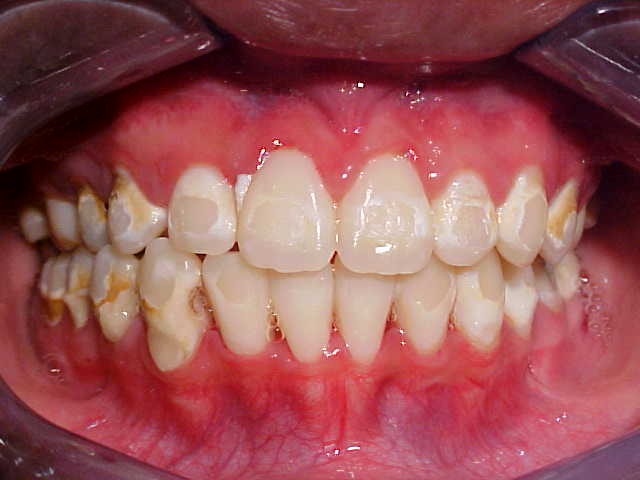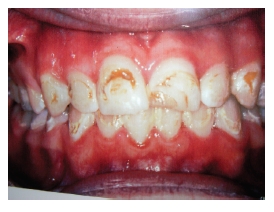It happened to us all: a small crack appears on the surface of our pearly whites which gradually expands until it becomes a bigger, darker spot. Soon enough, that spot develops into a cavity that threatens to eat away at the entire structure.

Image: saveasmile.com.my
This deterioration of our teeth is called tooth decay, which stems from plaque accumulating on our enamel. This plaque is made up of germs that feed on sugars and remains trapped in and between our teeth that we are unable to remove in our daily brushing.
**Demystifying Tooth Decalcification: Back to Basics**
What is Tooth Decalcification?
Decalcification is a common dental condition that affects people of all ages. It occurs when the minerals in the teeth are lost, making them weaker and more susceptible to decay. In its early stages, it often goes unnoticed, allowing the erosion to progress over time hence the importance of regular dental check-ups.
There are many possible causes of tooth decalcification, including eating a diet high in sugar and acid, as well as poor oral hygiene and dry mouth. However, the most common cause of tooth decalcification is untreated plaque, which can allow harmful bacteria to attack and damage the teeth.
How Does Tooth Decalcification Happen?
Decalcification damages the teeth in a gradual manner, often beginning with a discoloration, either whitish or brown depending on the tooth’s color. Eventually, this colored region deteriorates into a soft, then chalky area on the teeth. Enamel erosion follows, which is the outer protective layer of the tooth.
If decalcification is ignored and left untreated, microscopic holes will form on the enamel. These are called cavities and are a major concern. Remember, a cavity doesn’t heal itself. In fact, it will keep growing bigger and bigger until it reaches the tooth’s pulp leading to a severe and painful infection.

Image: pocketdentistry.com
Restoring Your Smile: Reversing Tooth Decalcification
Early on, decalcification is reversible. However, once the enamel has been eroded, resolving the decalcification will require some form of restorative dentistry, notably a filling, crown, or veneer.
Regular dental checkups and excellent oral hygiene are two important practices in your fight against decalcification. Certain foods, like cheese and milk, are known to maintain or even restore your enamel. As for toothpaste, look for ones with fluoride as they help rebuild the enamel of your teeth.
Expert Advice: Tips for Preventing Tooth Decalcification
Taking Precautions Against Plaque
- Brush your teeth at least twice a day with a fluoride toothpaste.
- Floss daily to remove plaque from between your teeth.
- Avoid sugary drinks and foods.
- Visit your dentist regularly for checkups and cleanings.
Fluoride: A Weapon Against Tooth Decalcification
Fluoride has a well-deserved reputation for being an important weapon in our fight against tooth erosion. Fluoride absorbs into tooth enamel and makes our teeth more resistant to losing those all-important minerals. Fluoride can be obtained mouthwash, toothpaste, and professional fluoride treatments provided by the dentist.
FAQs on Decalcification: Answering Your Queries
Q: Can tooth decalcification be reversed?
A: In some instances, tooth decalcification can be reversed if treated early on. Small areas of demineralization may remineralize. This can happen naturally or with help from professional fluoride treatments.
Q: What are the symptoms of tooth decalcification?
A: In the starting stages of tooth decalcification, patients can usually detect a white spot, line or band on the surface of their tooth. This whitened area signifies an area of enamel damage. Over time, you may experience tooth discoloration, pain, or cavities (holes). If you notice any of these symptoms, visit your dentist for a proper diagnosis and treatment plan.
Q: What is enamel erosion?
A: Enamel erosion is the gradual loss of the hard protective outer layer of your teeth. When your teeth are constantly exposed to acids from acidic foods and drinks, the minerals in your teeth can begin to break down.
Q: How can I prevent tooth decalcification?
A: The best way to prevent tooth decalcification is to practice good oral hygiene, including brushing your teeth twice a day with a fluoride toothpaste, flossing daily, avoiding sugary drinks and foods, and visiting your dentist regularly for checkups and cleanings.
How To Fix Decalcified Teeth
**Conclusion: Reclaiming Your Dental Health**
Tooth decalcification is a common problem, but it’s one that can be easily prevented and reversed in its early stages. By following these simple tips, you can help keep your smile healthy and bright.
Interested in learning more? Visit [Website Address] for more information on tooth decalcification and other dental health topics.